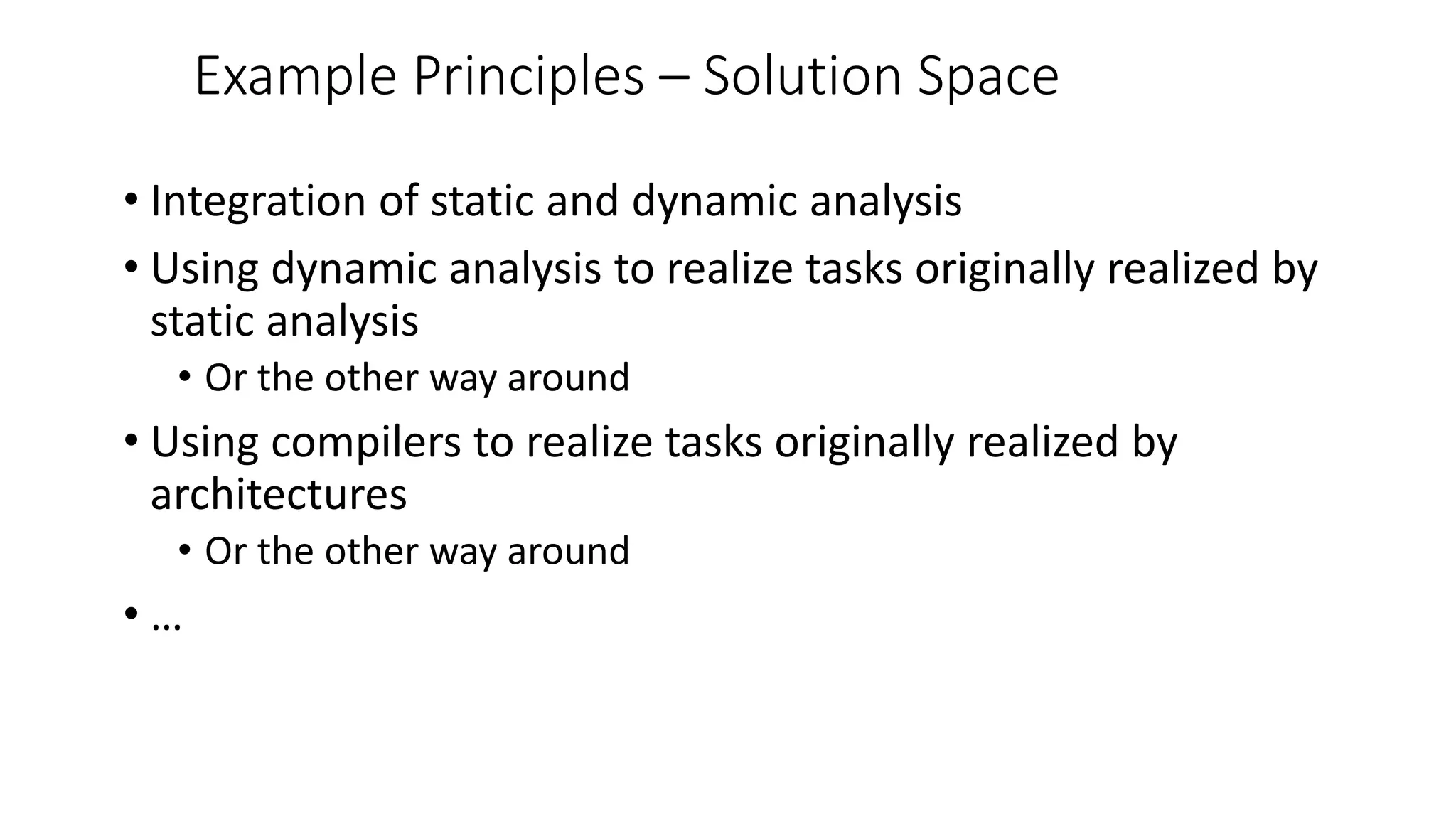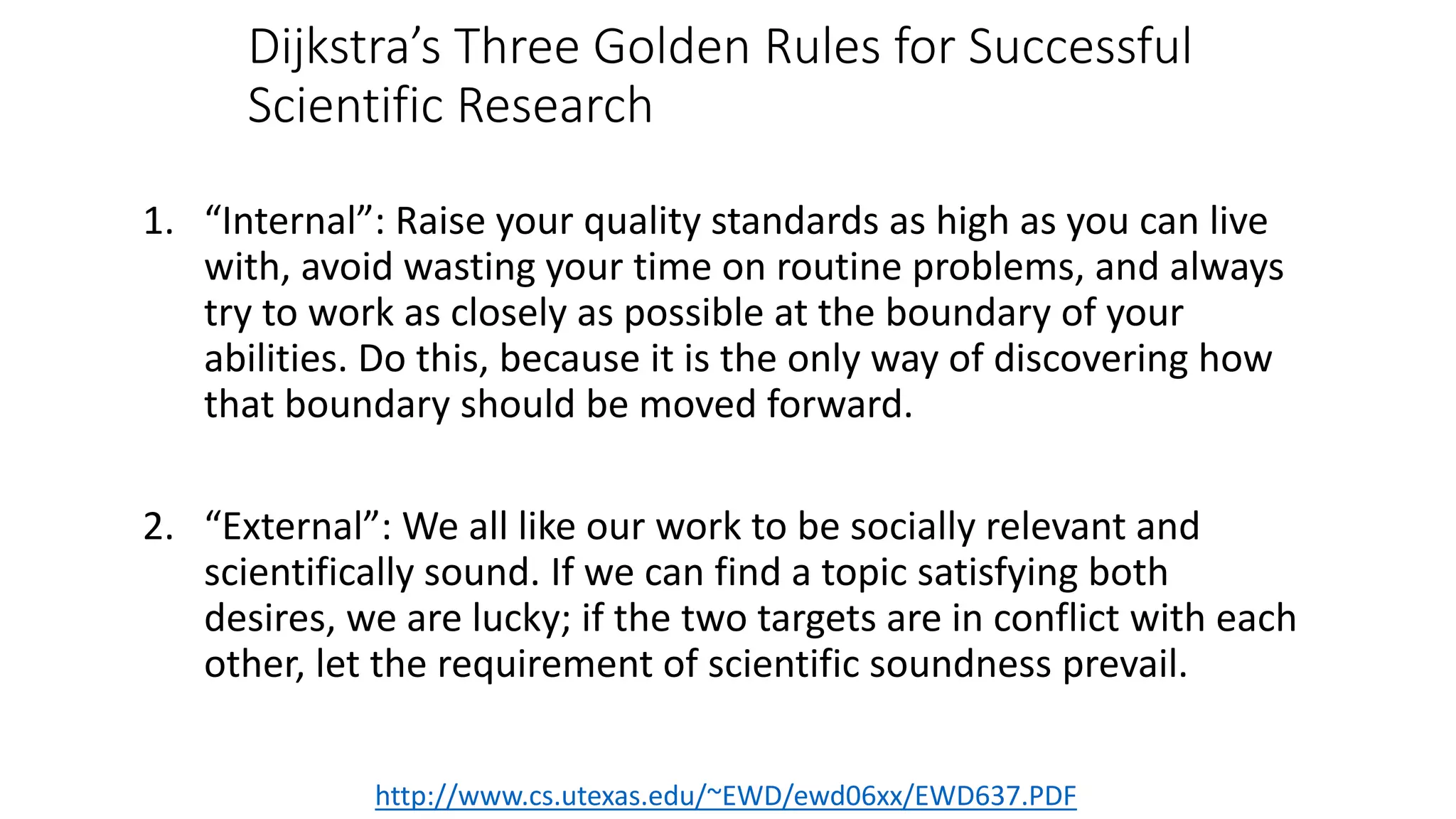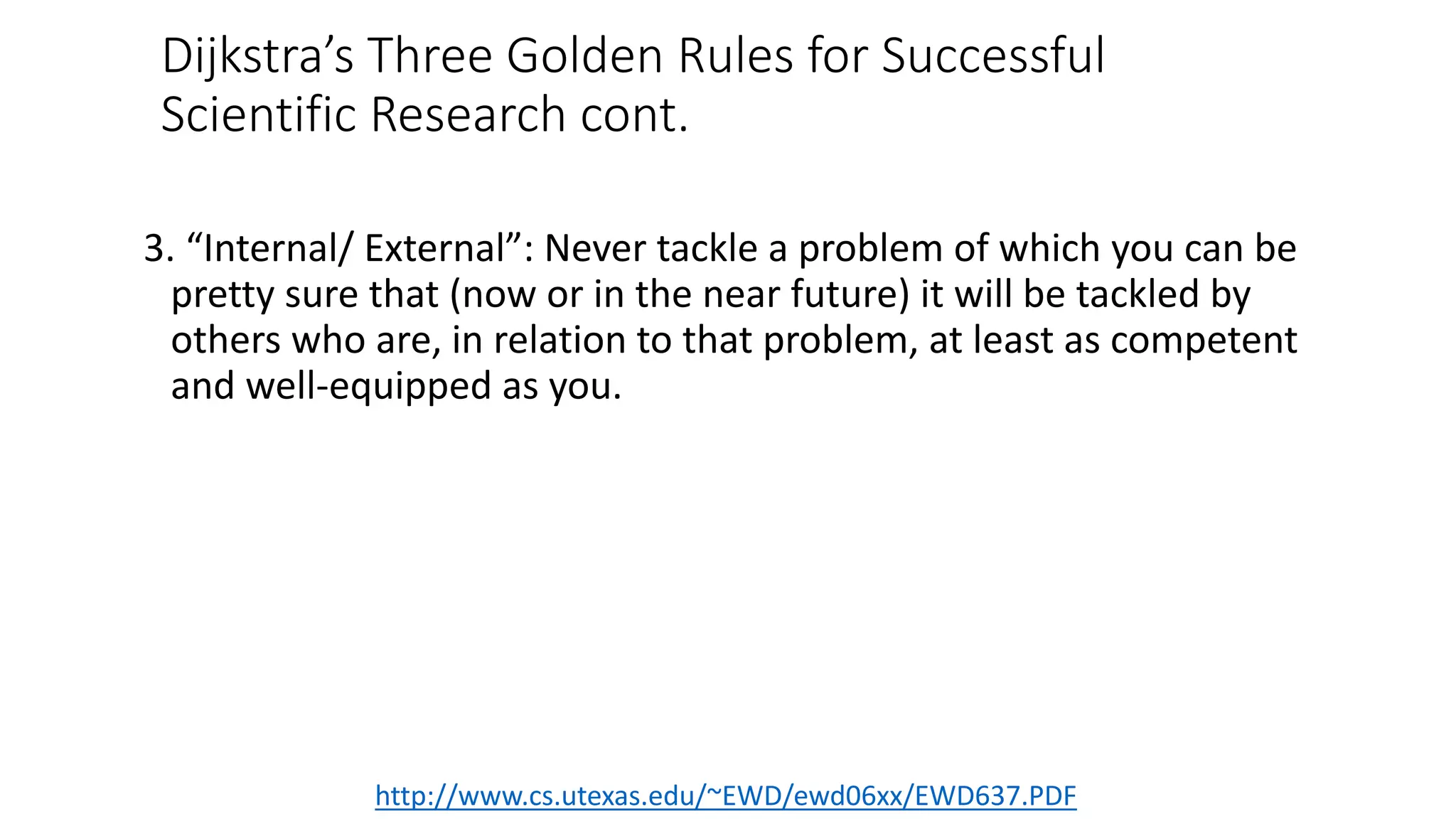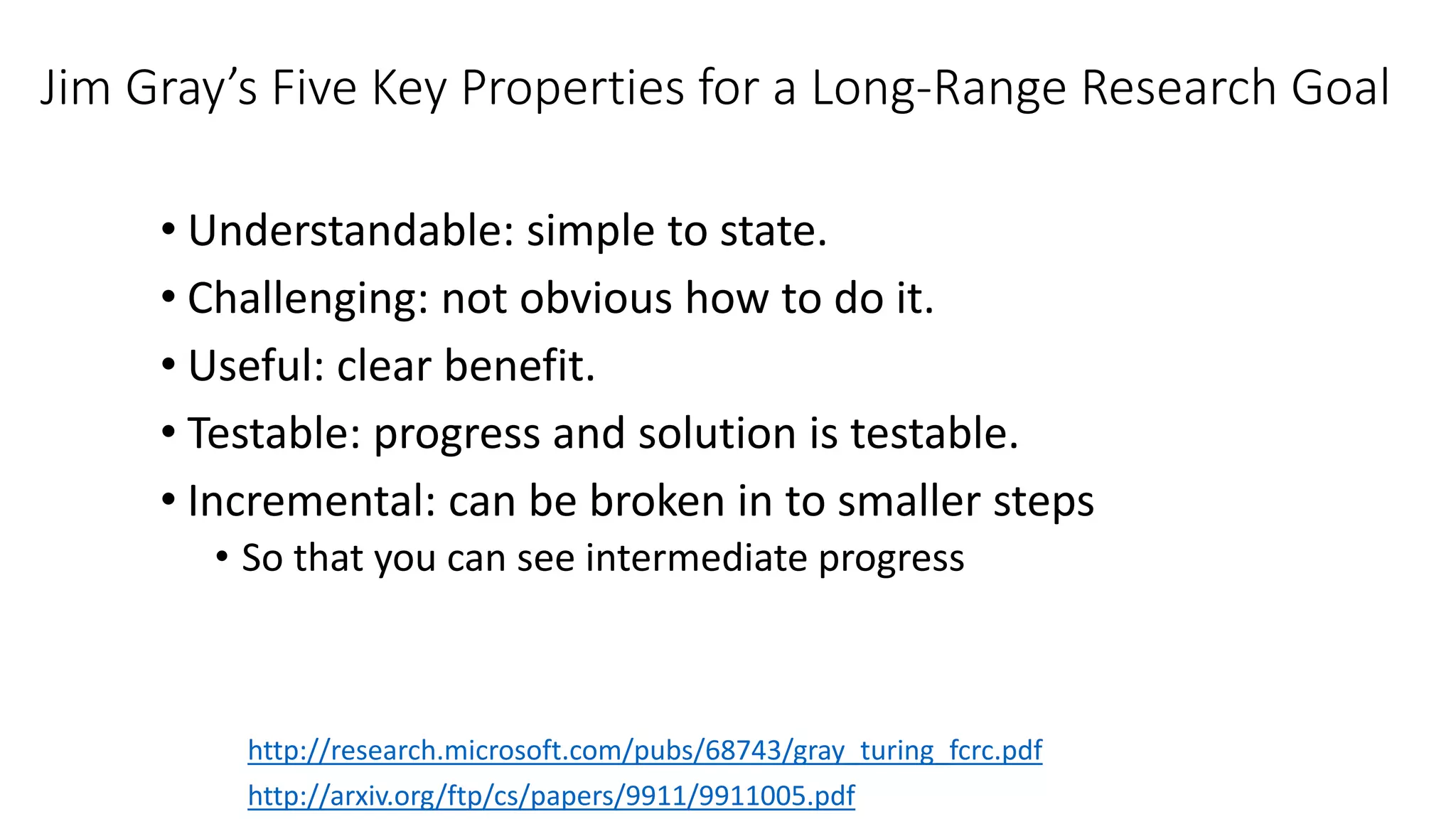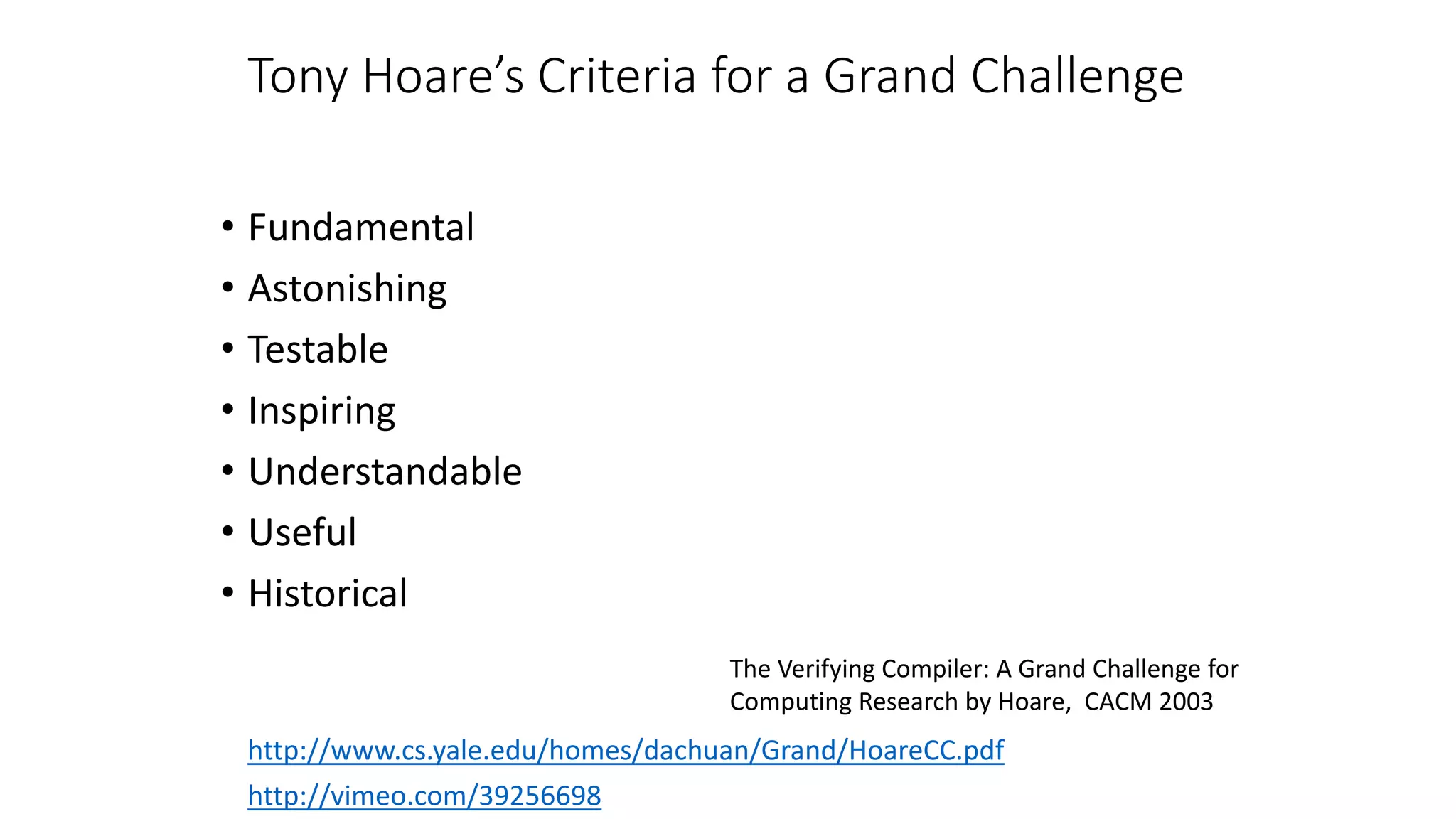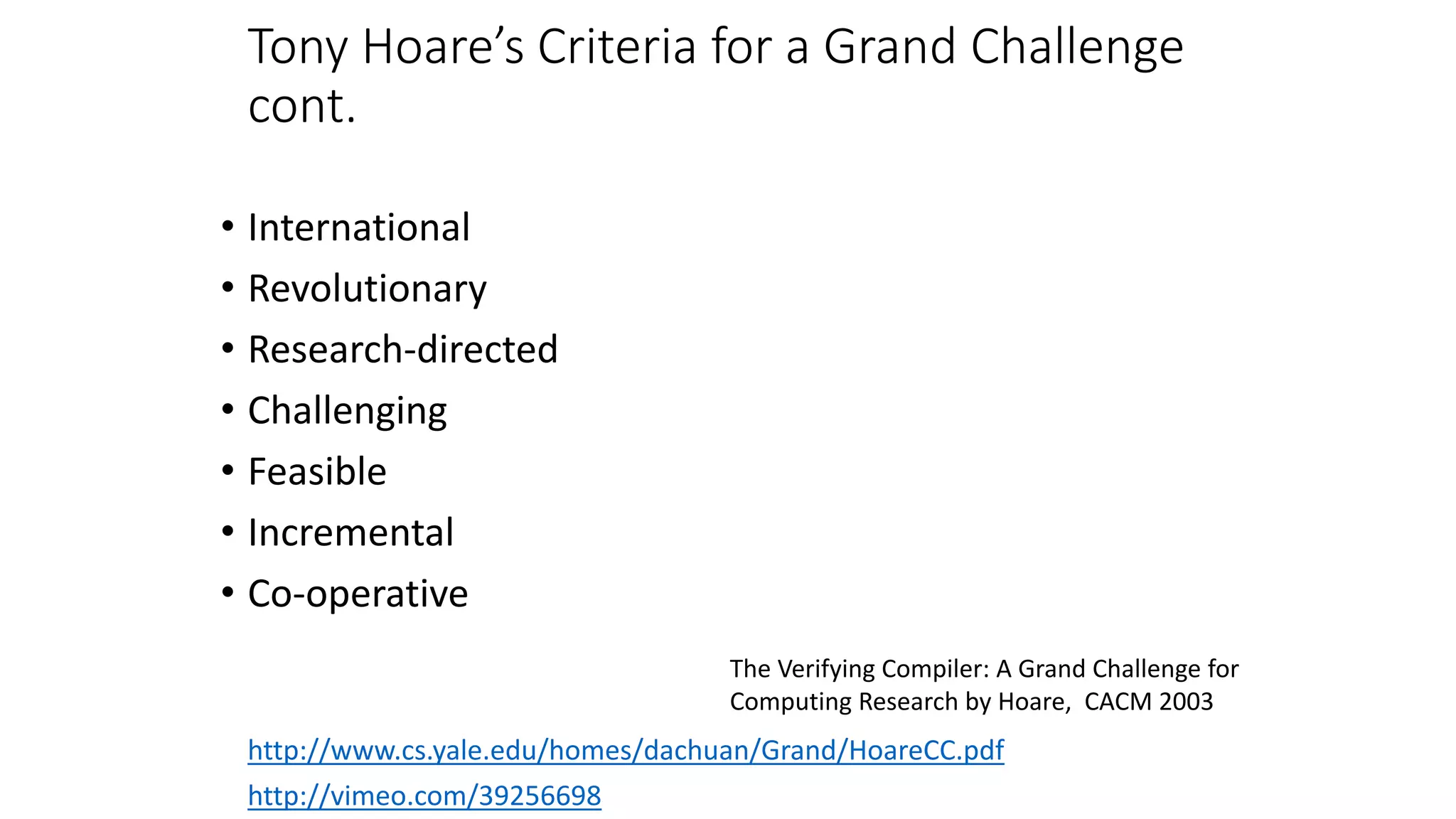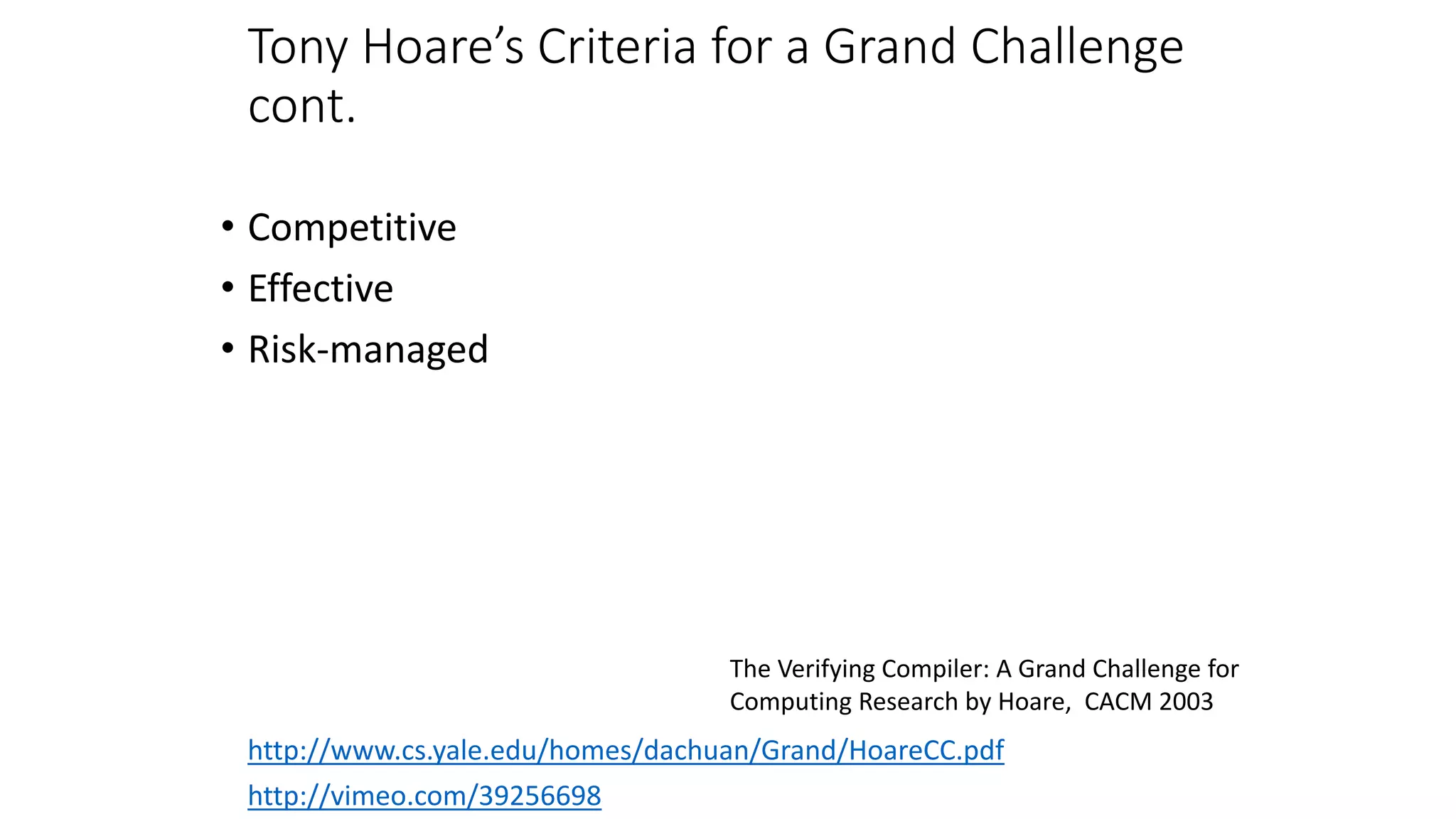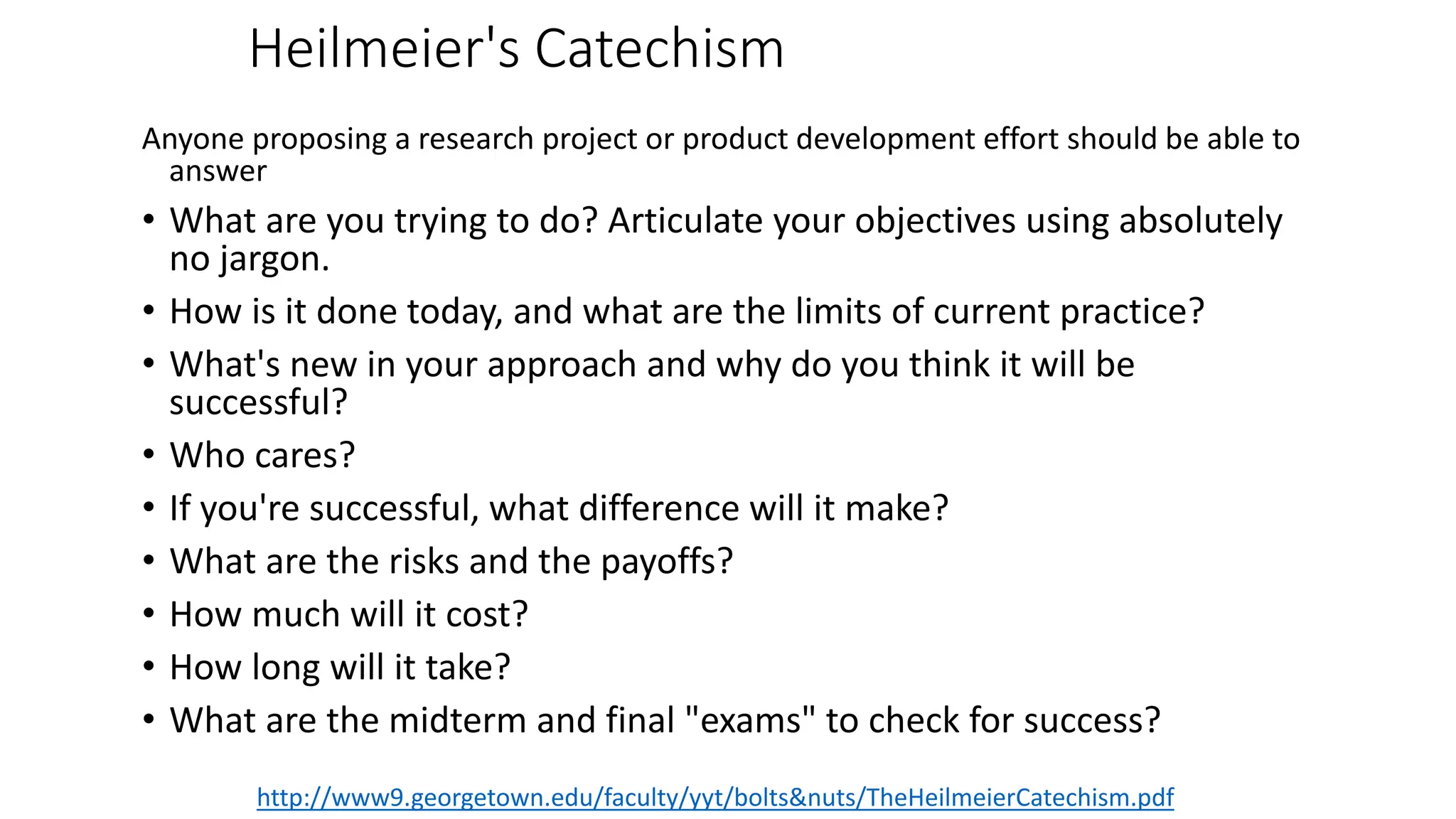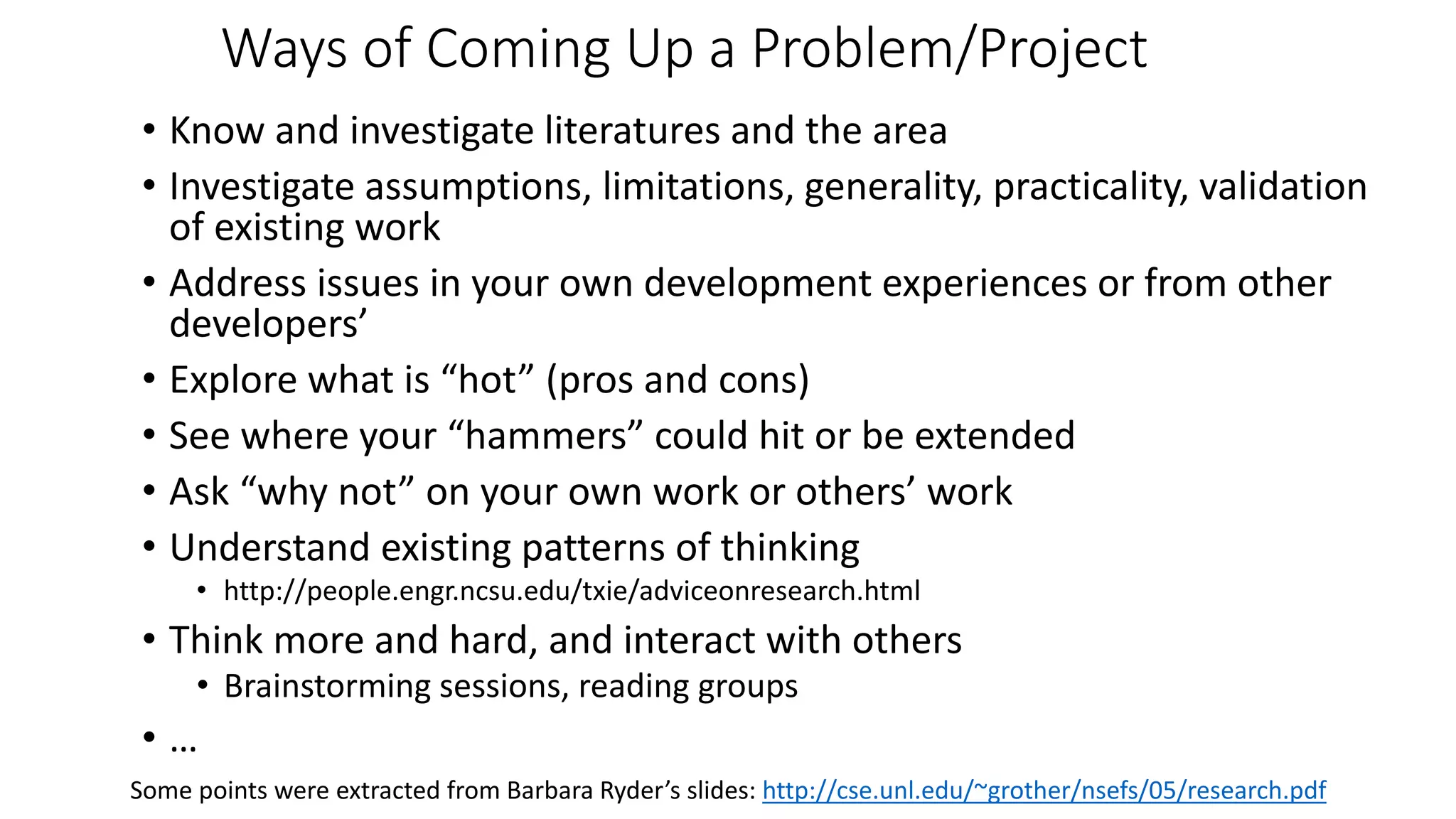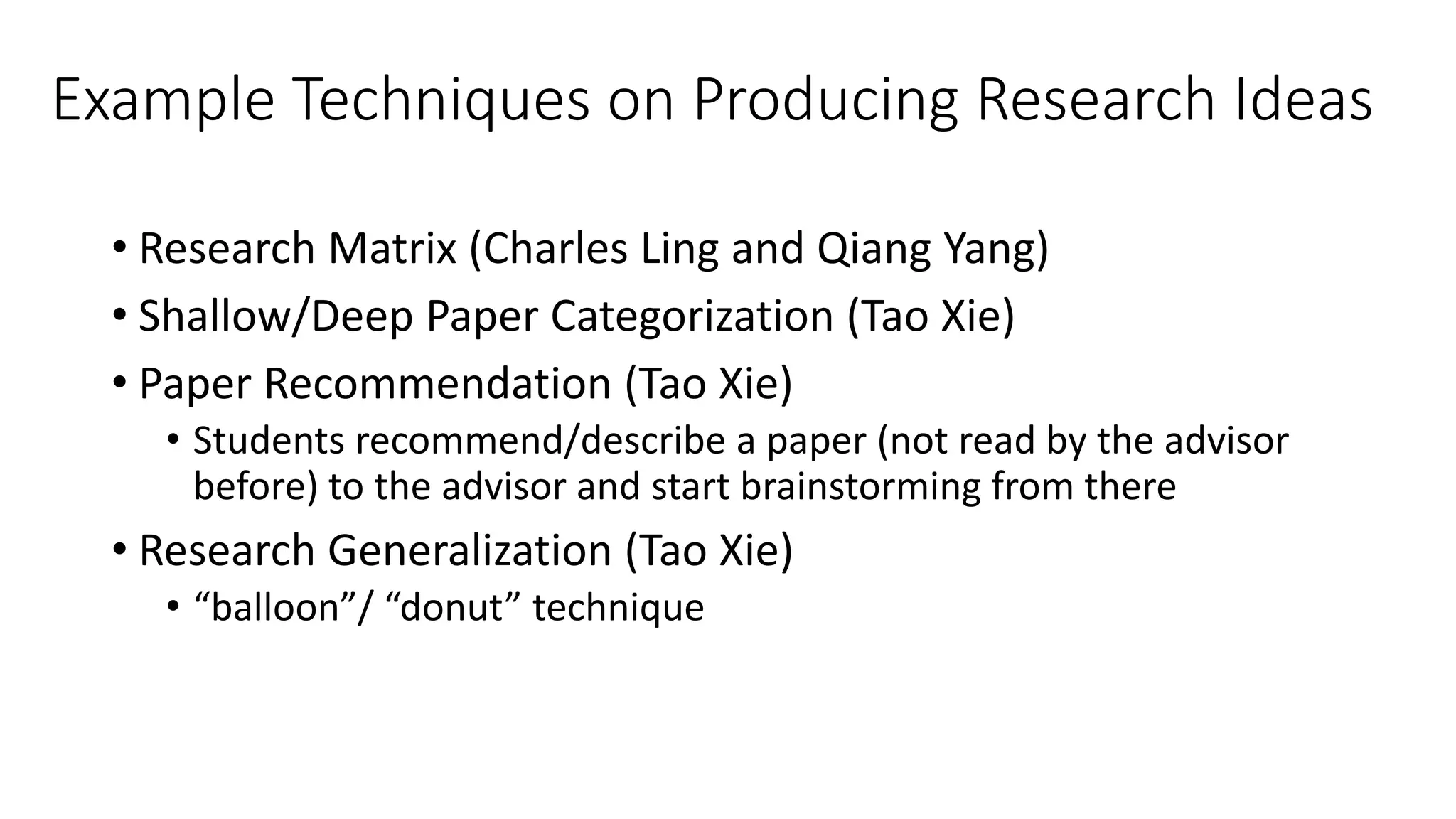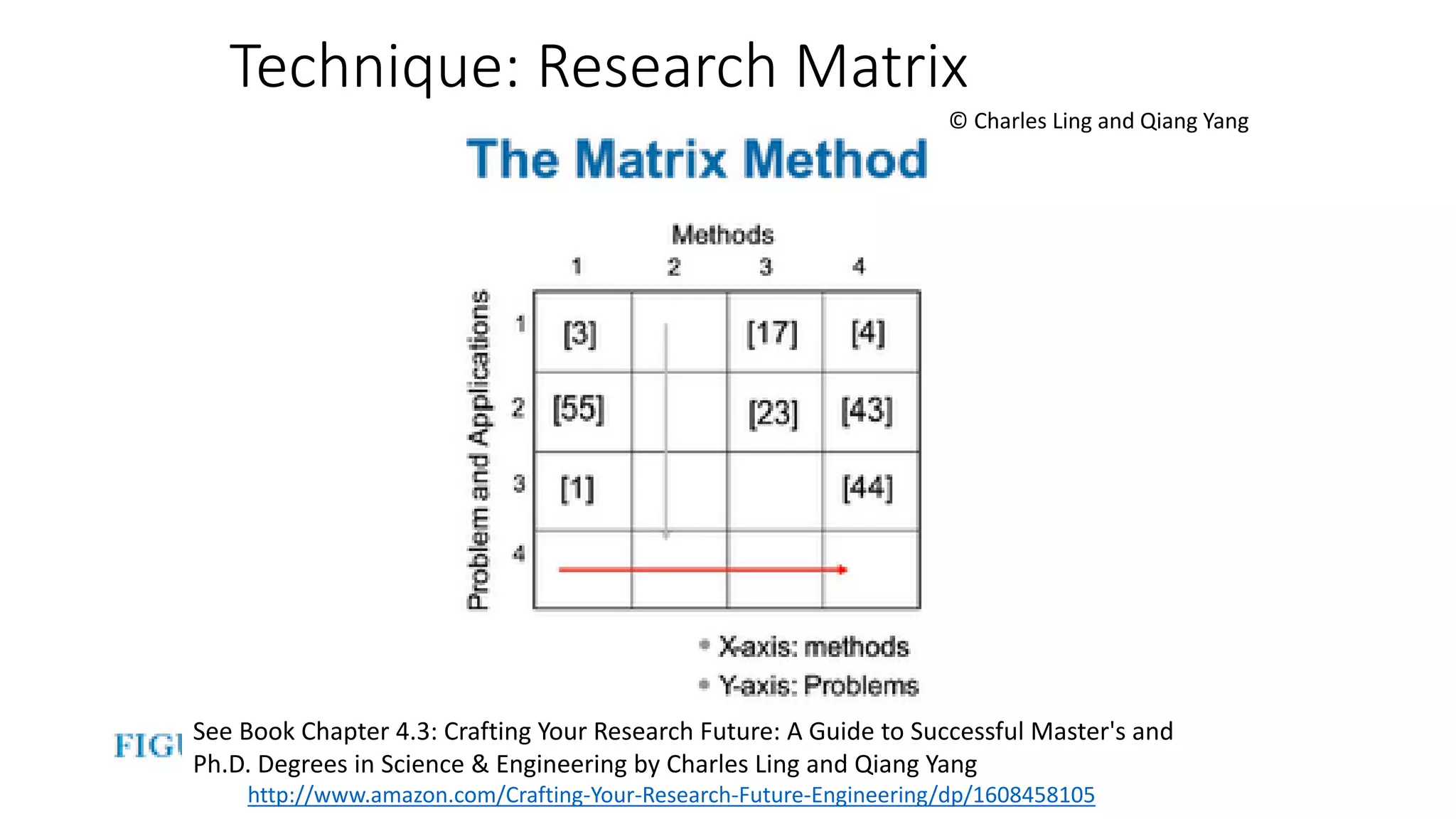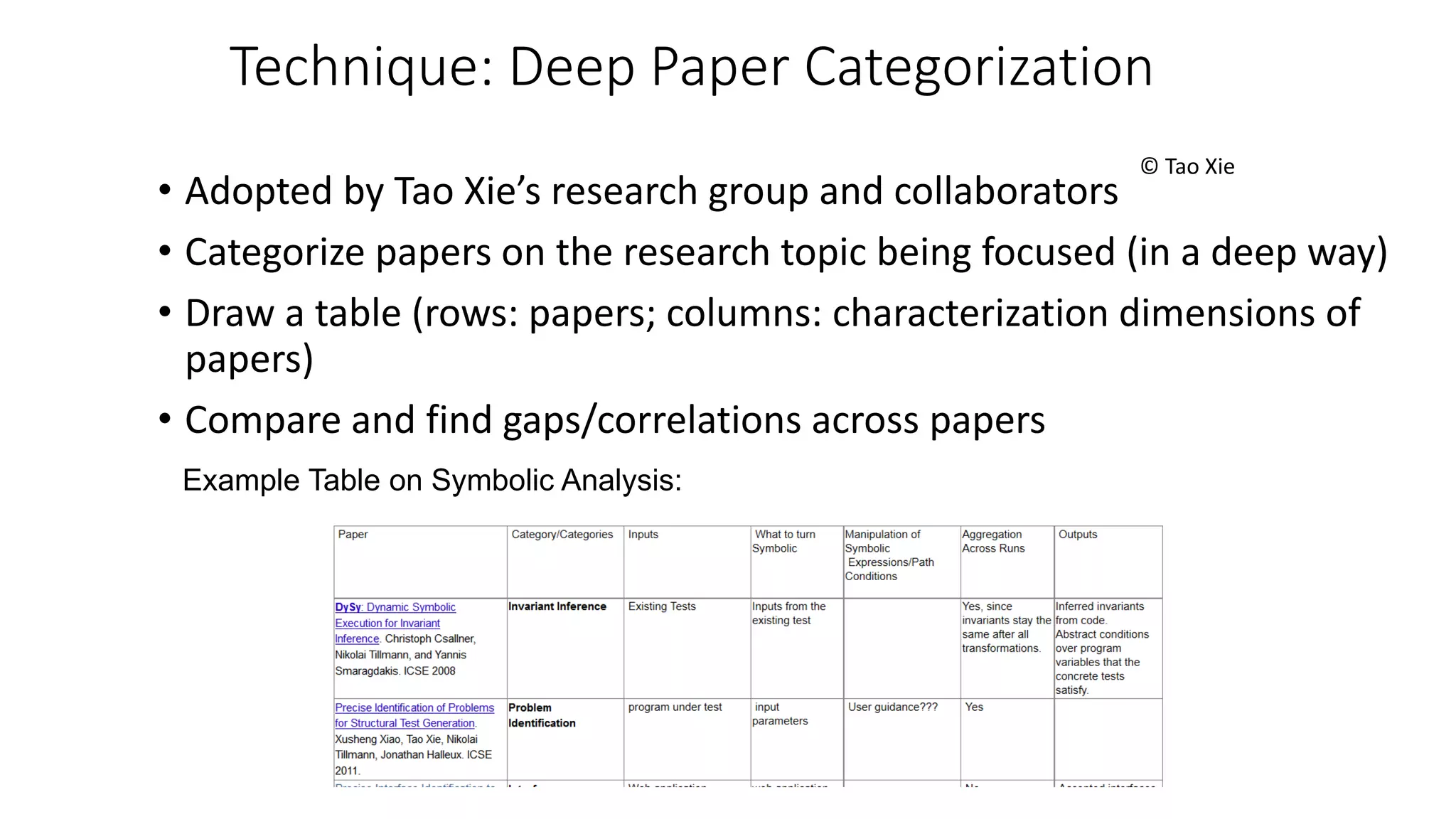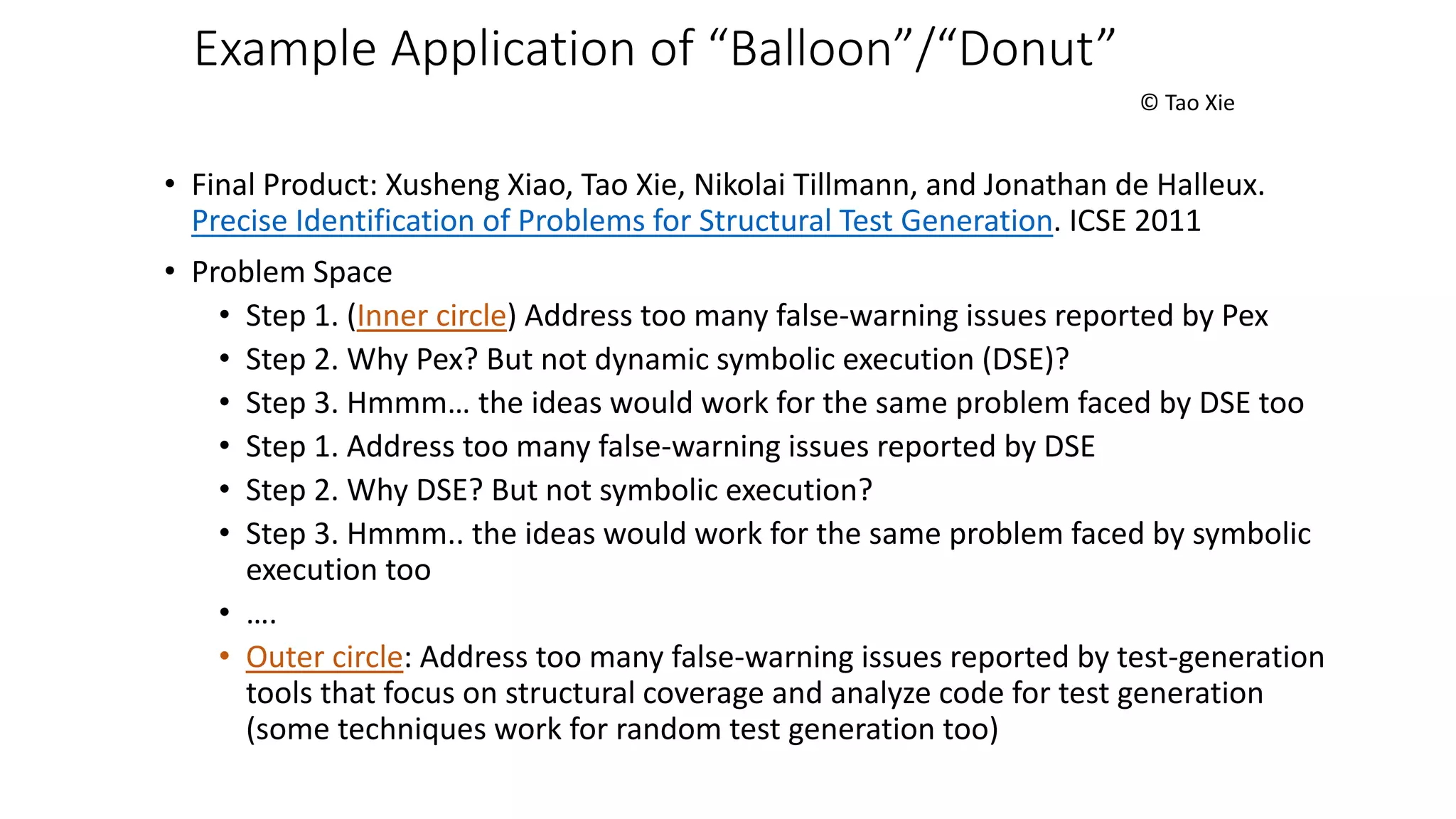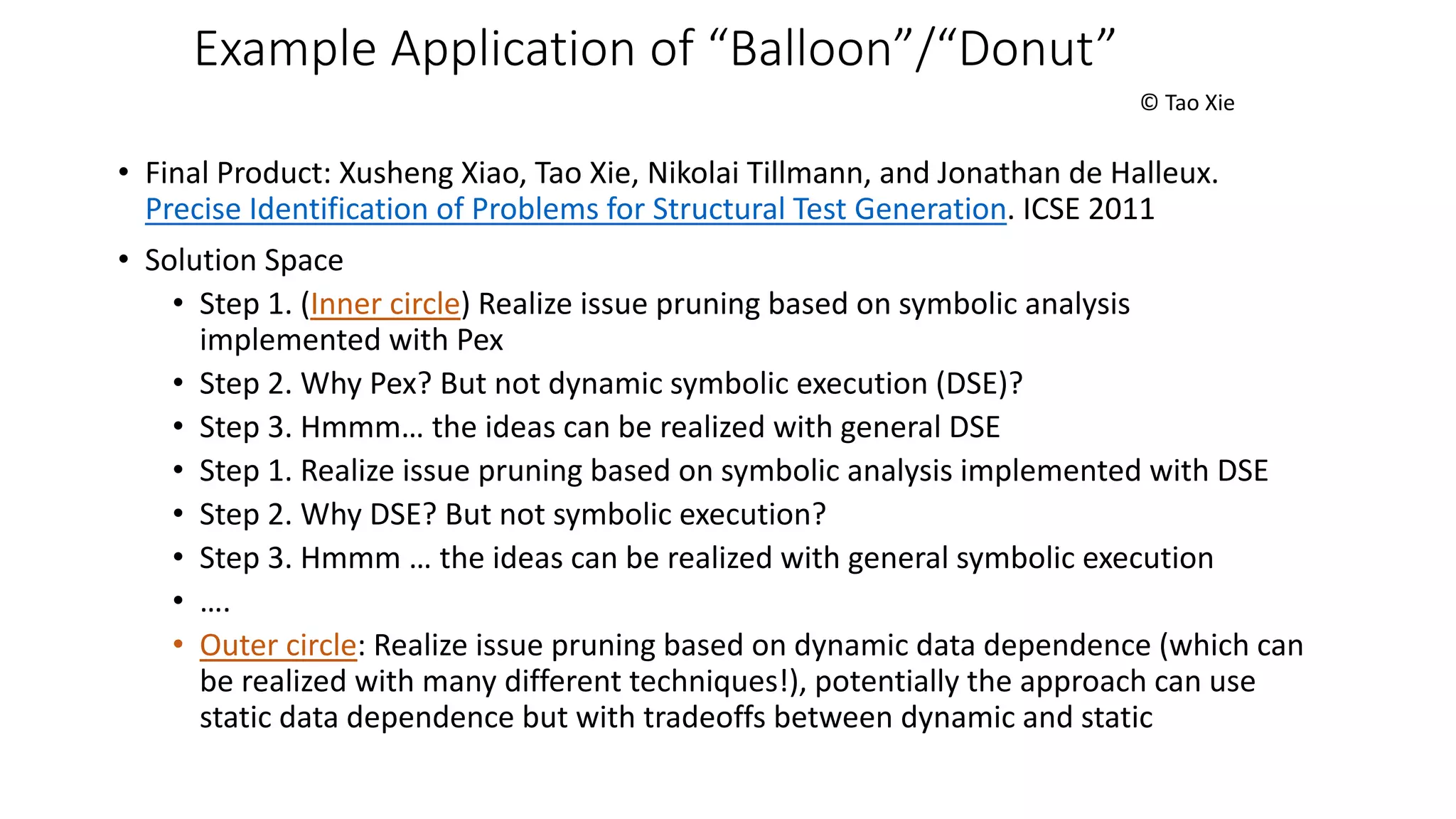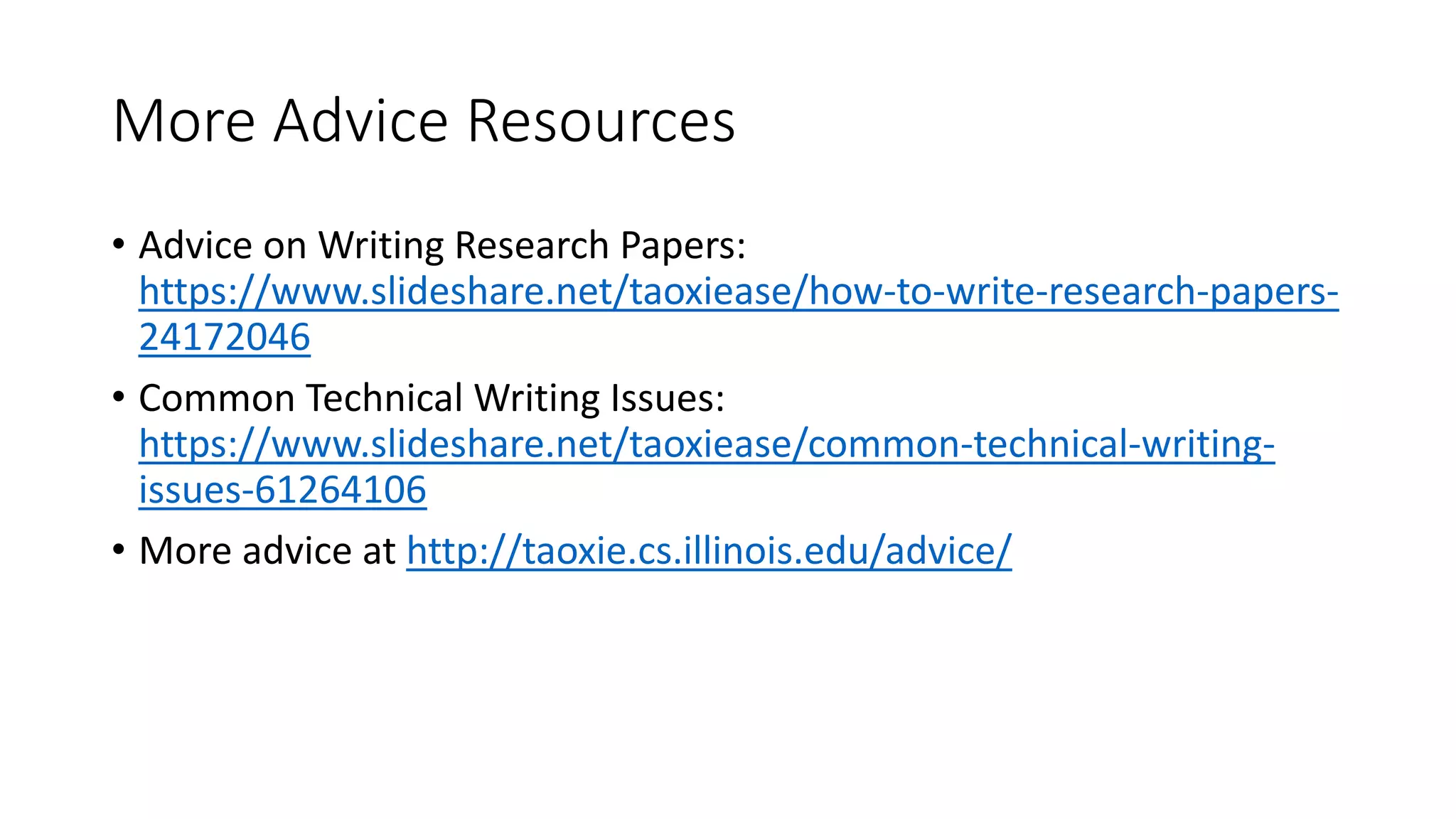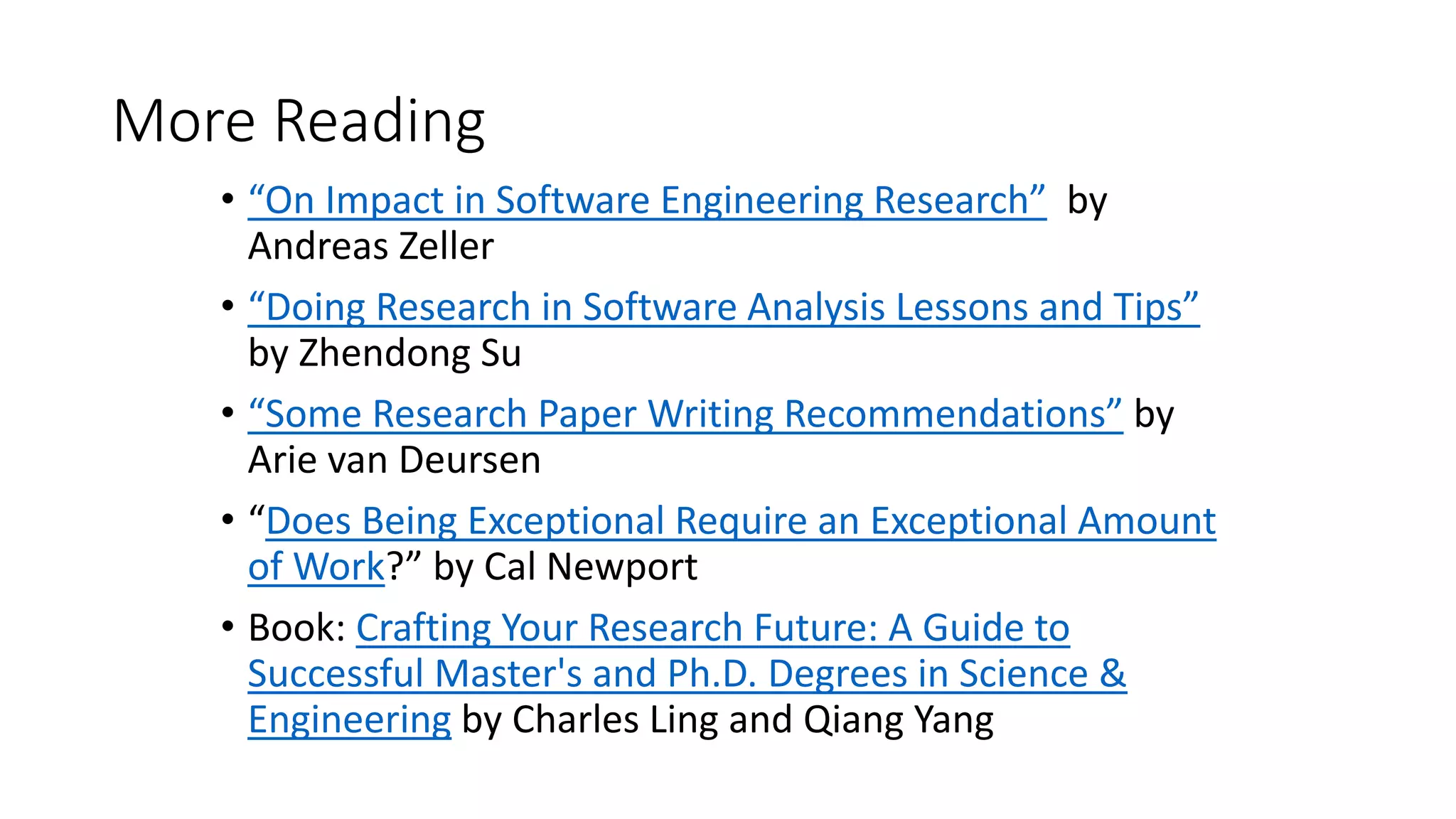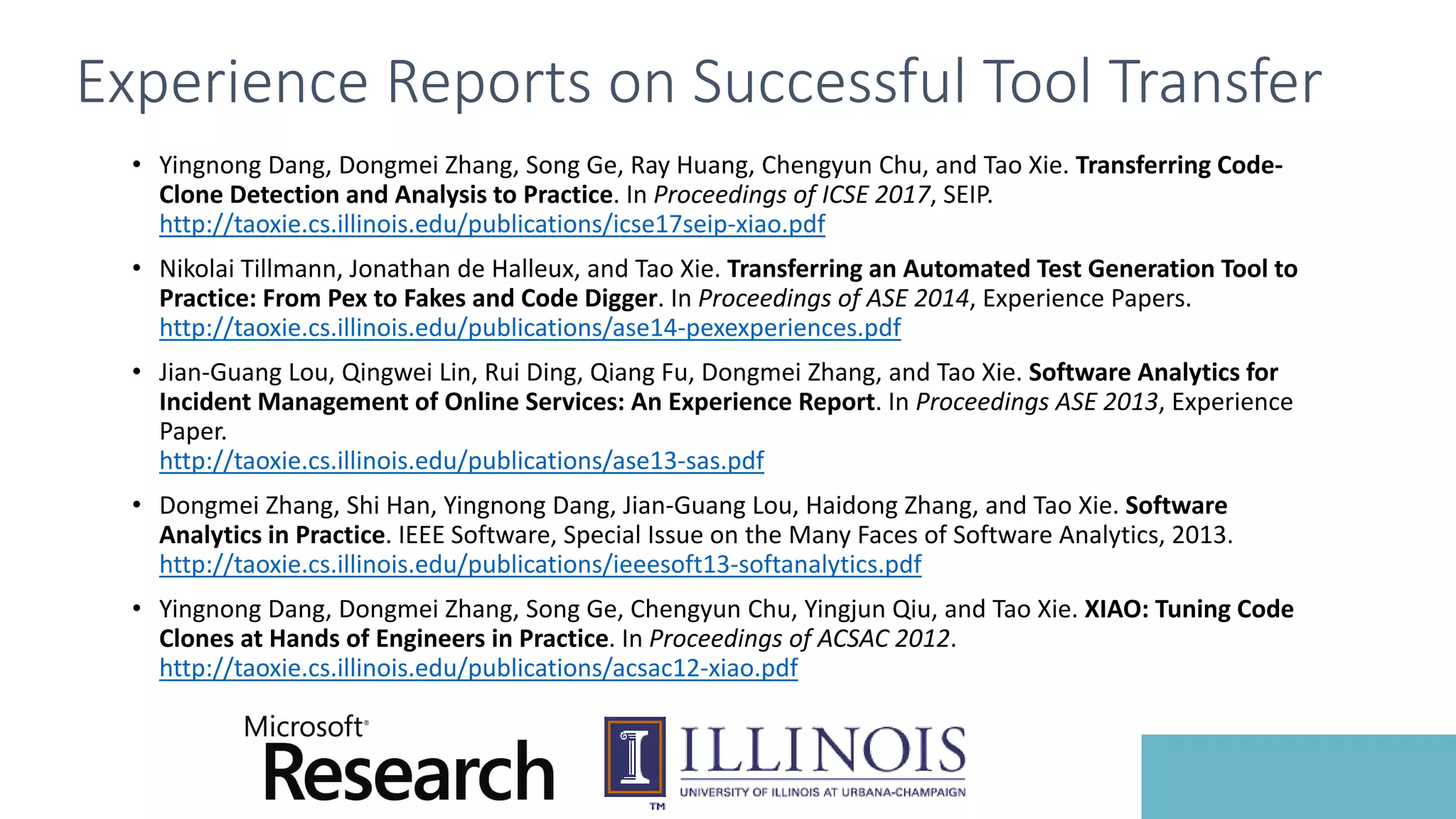The document discusses methodologies for pursuing impact-driven research, emphasizing the importance of aligning academic research with societal needs and practical applications in industry. It outlines factors influencing research project selection, including significance, novelty, feasibility, and potential for societal impact, while advocating for effective academia-industry collaborations. Additionally, it provides guidance on formulating research objectives and generating innovative research ideas through various techniques.
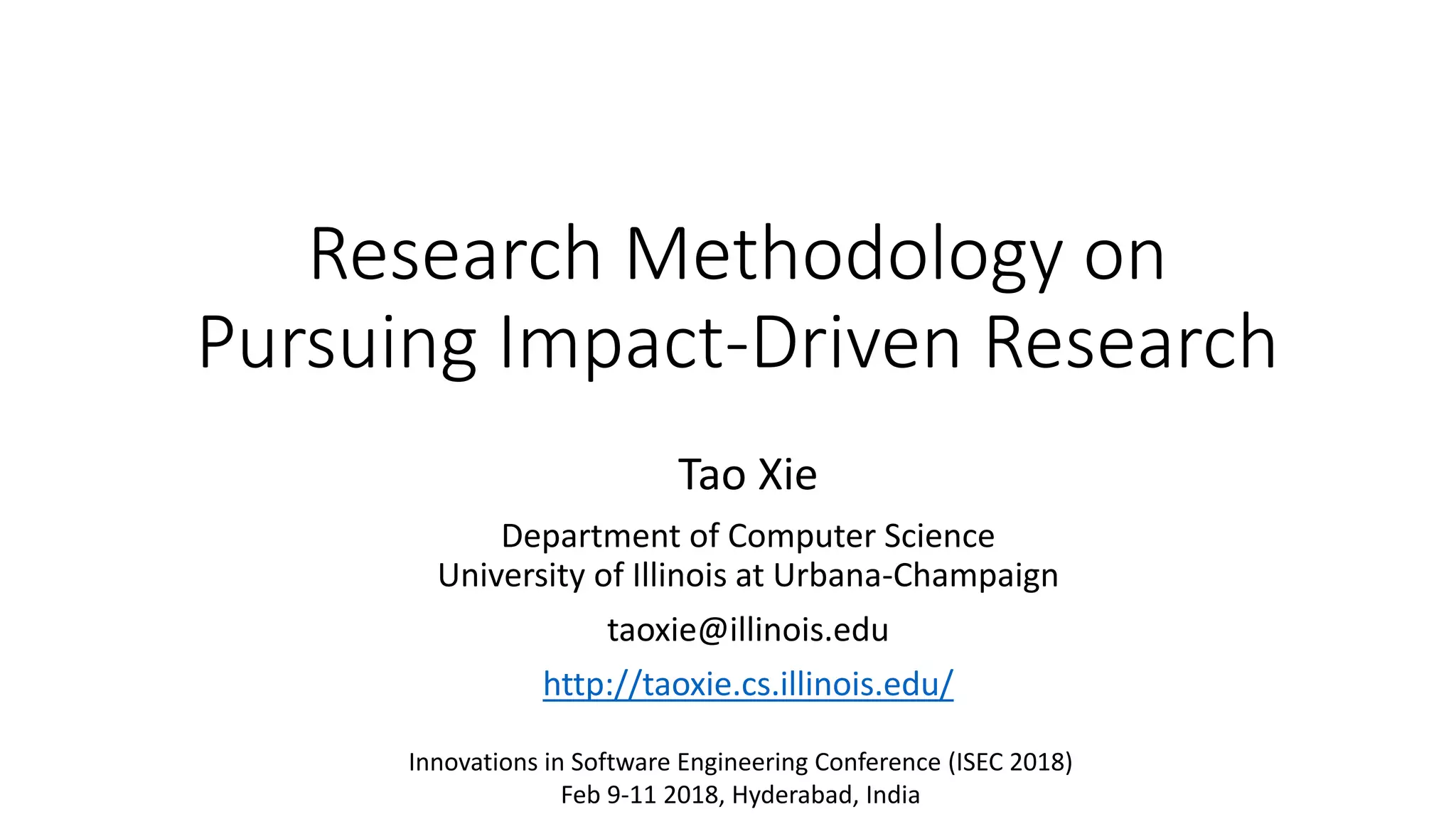

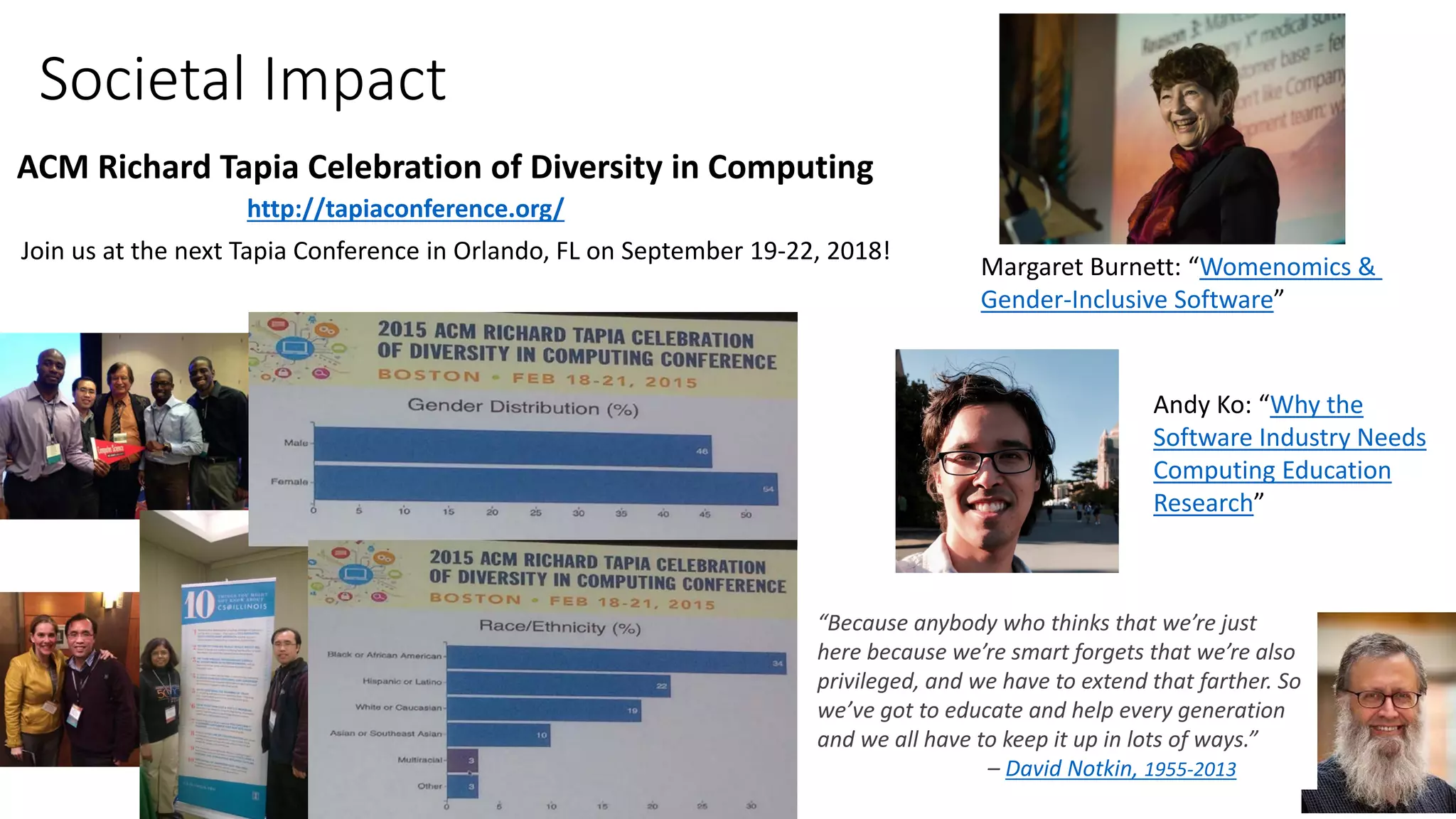
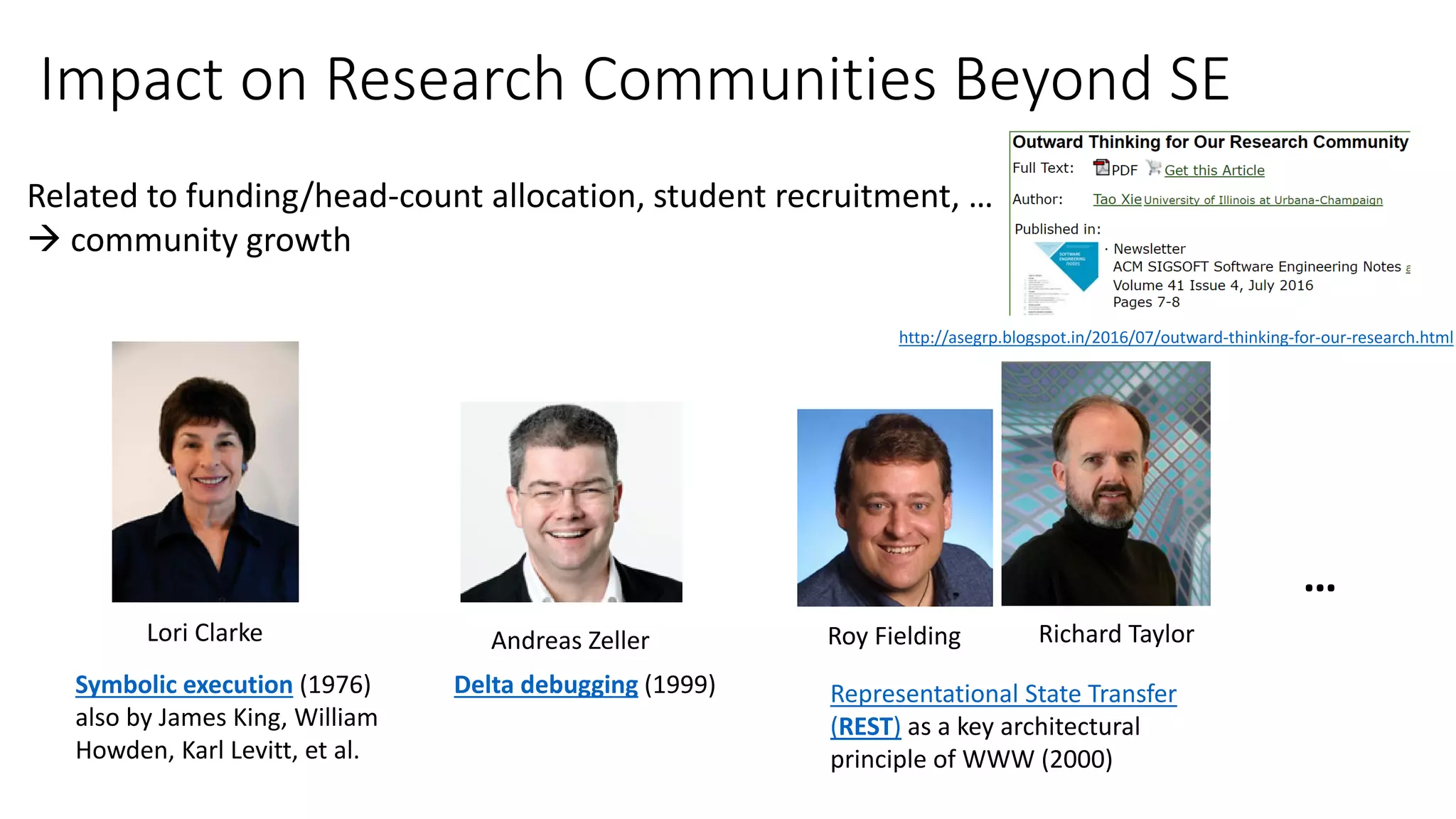


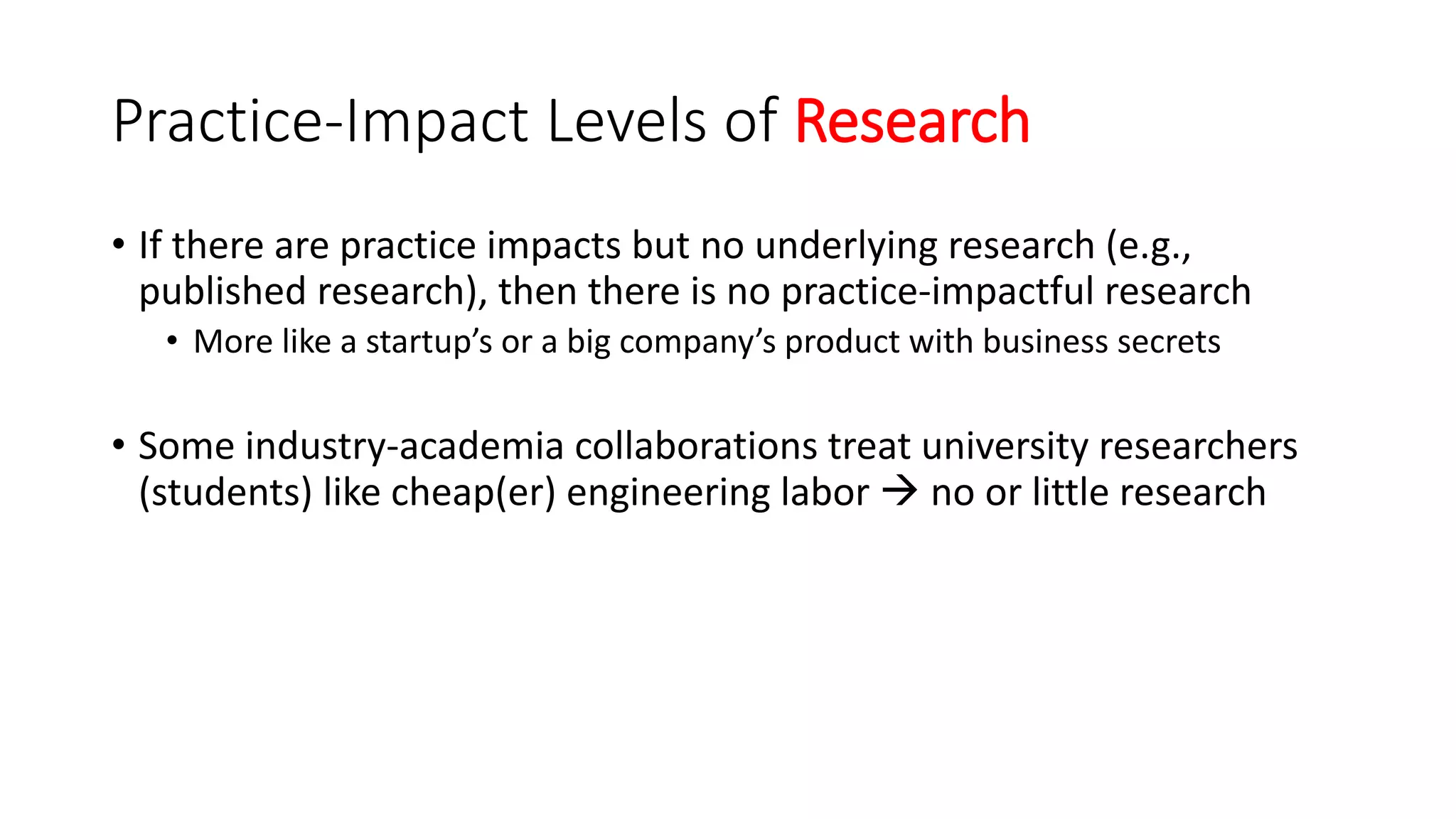
![Desirable Problems for Academia-Industry
Collaborations
• Not all industrial problems are worth effort investment from university
groups
• High business/industry value
• Allow research publications (not business secret) to advance the knowledge
• Challenging problem (does it need highly intellectual university researchers?)
• Desirably real man-power investment from both sides
• My recent examples
• Tencent WeChat [FSE’16 Industry], [ICSE’17 SEIP]: Android app testing/analysis
• Exploring collaborations with Baidu, Alibaba, Huawei, etc.
• Exploring new collaborations with MSRA SA](https://image.slidesharecdn.com/impactdrivenresearch2018-taoxie-180210225859/75/ISEC-18-Tutorial-Research-Methodology-on-Pursuing-Impact-Driven-Research-8-2048.jpg)
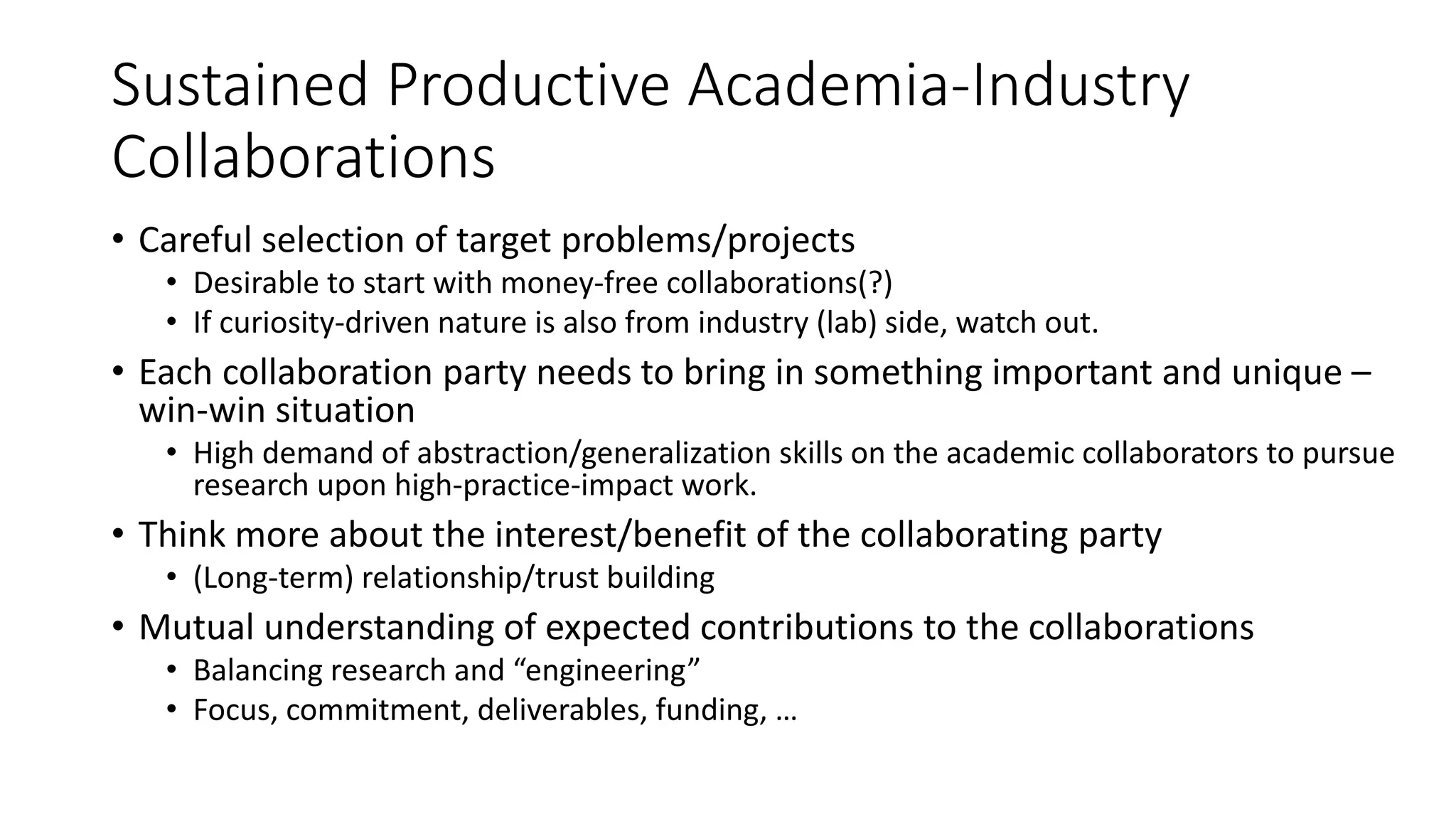
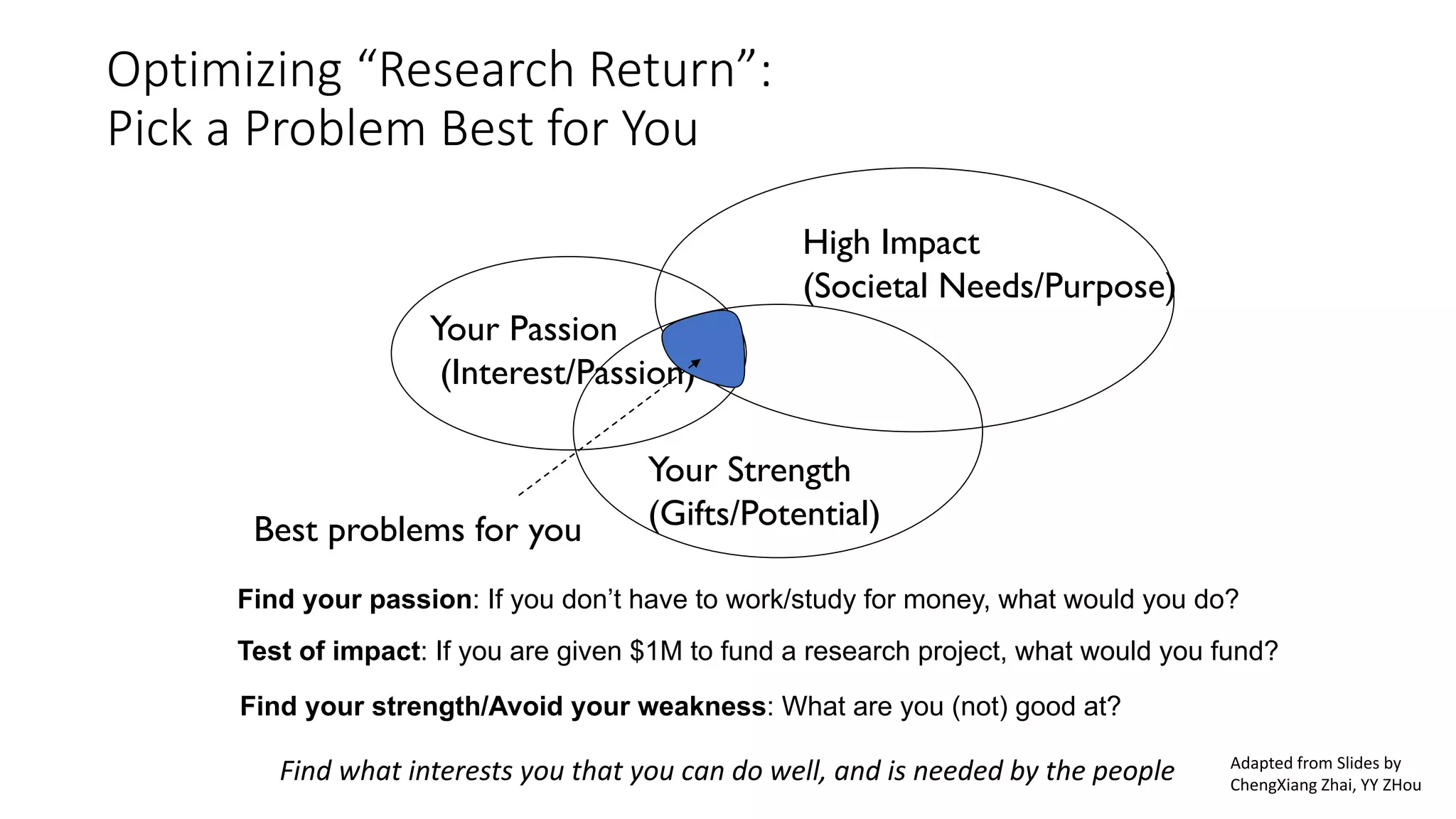
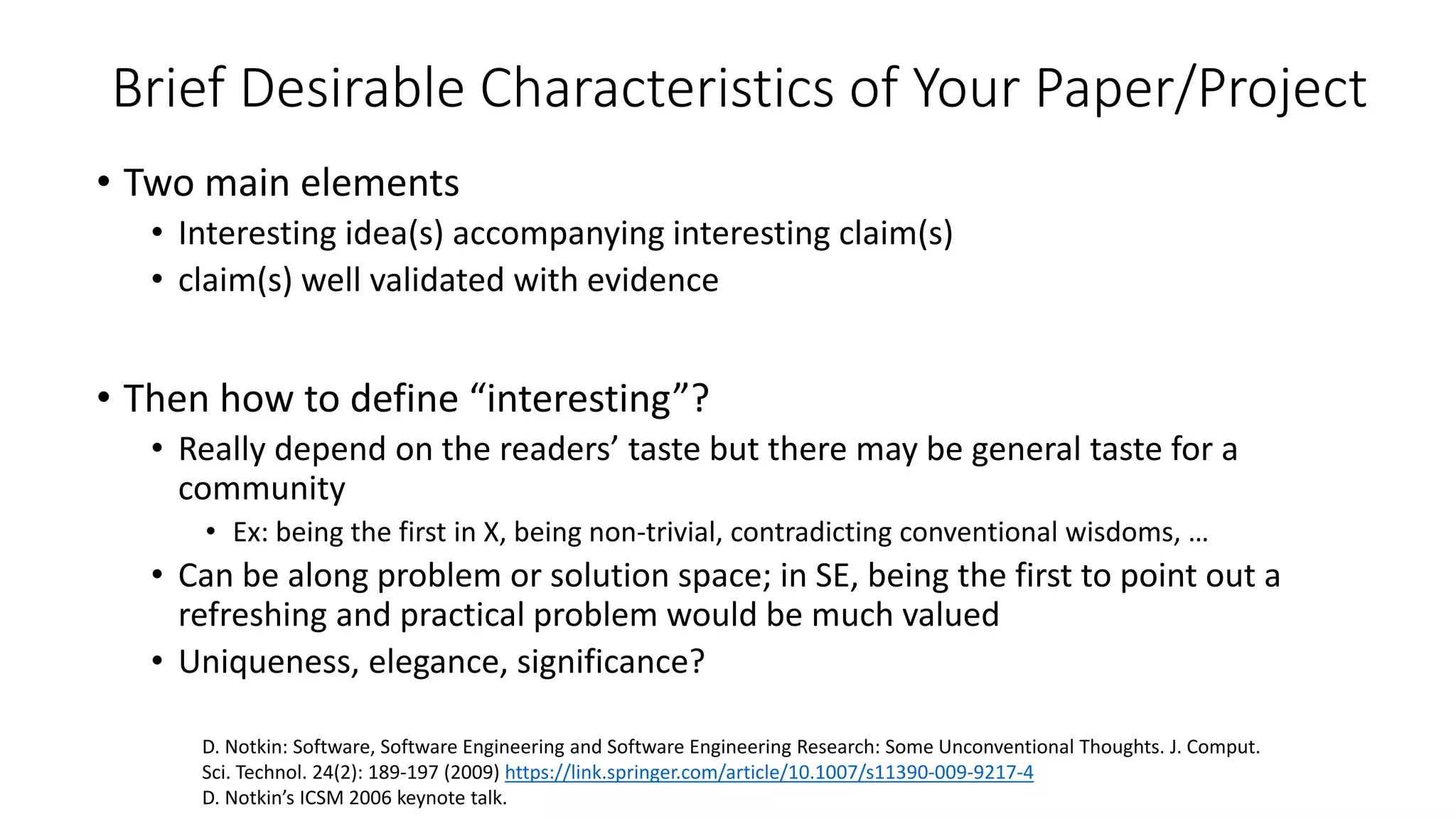
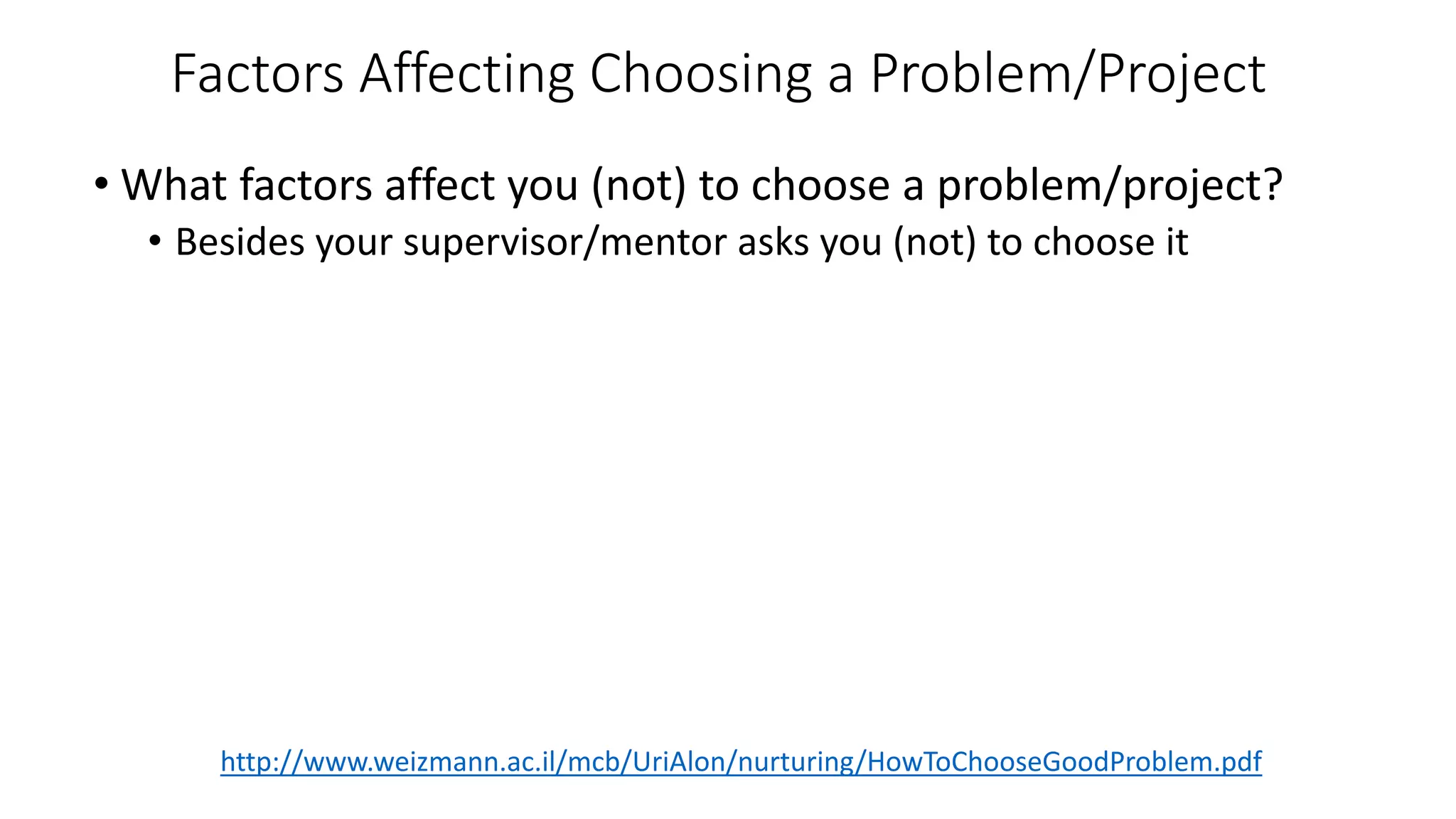
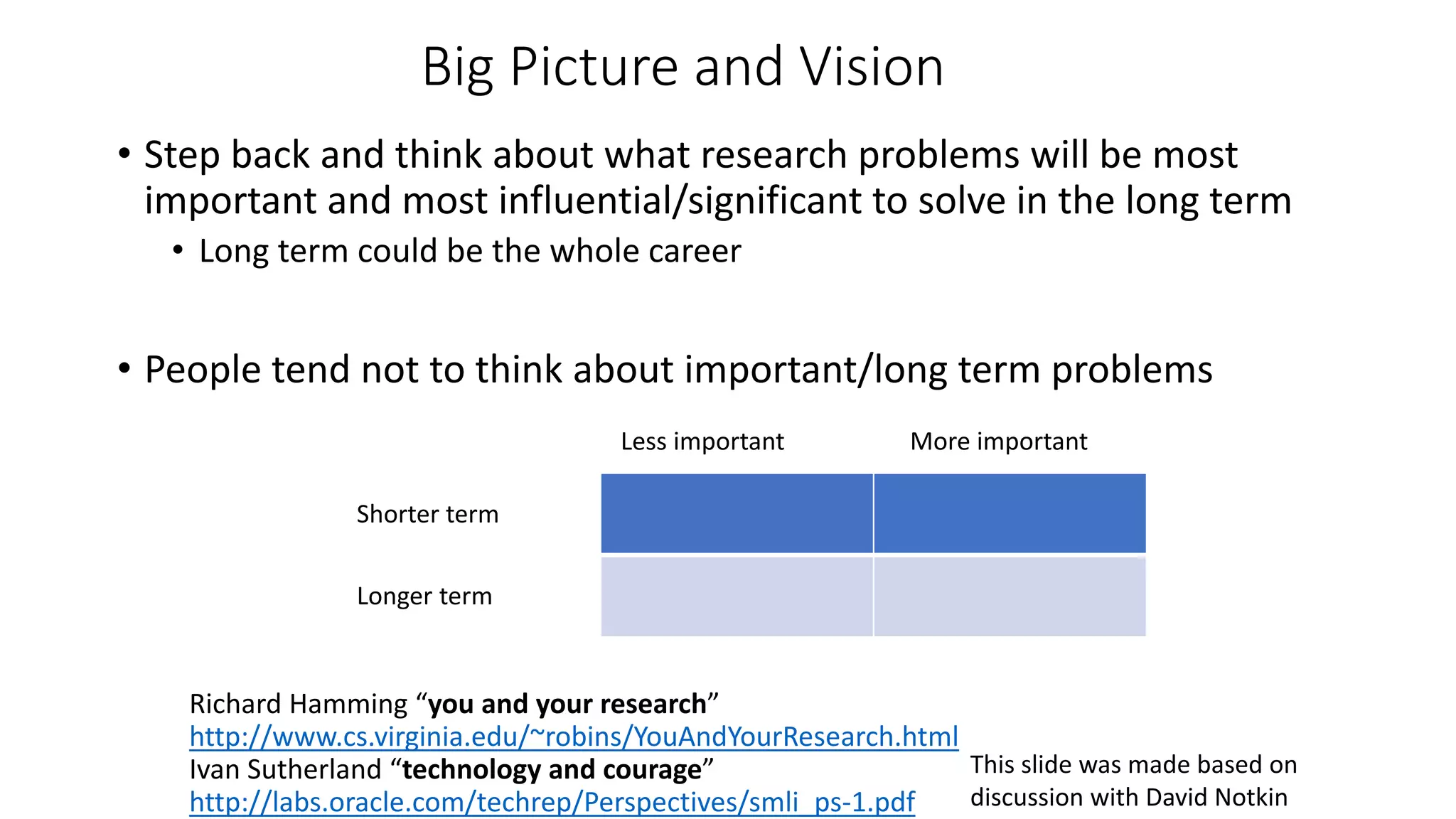
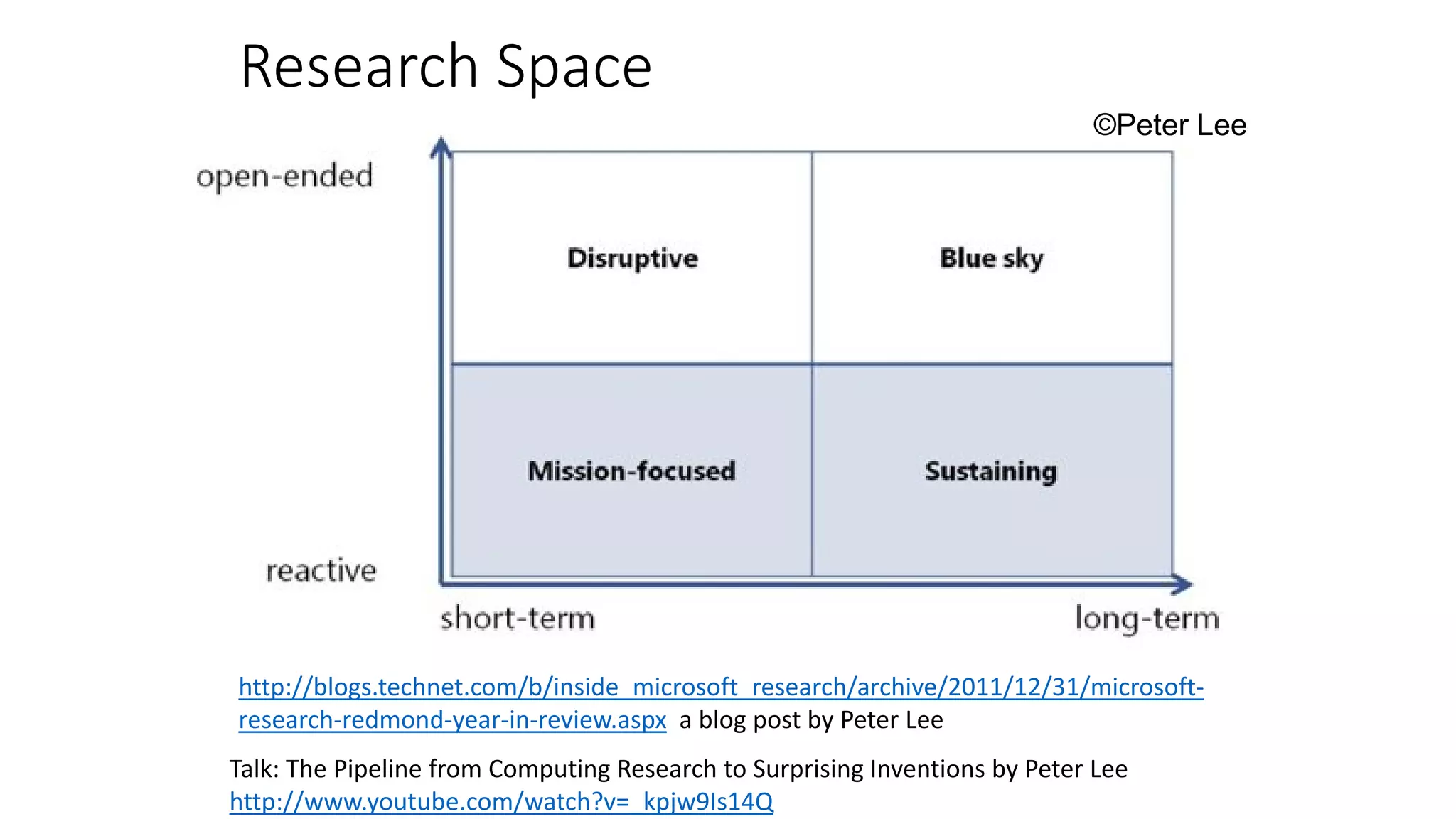
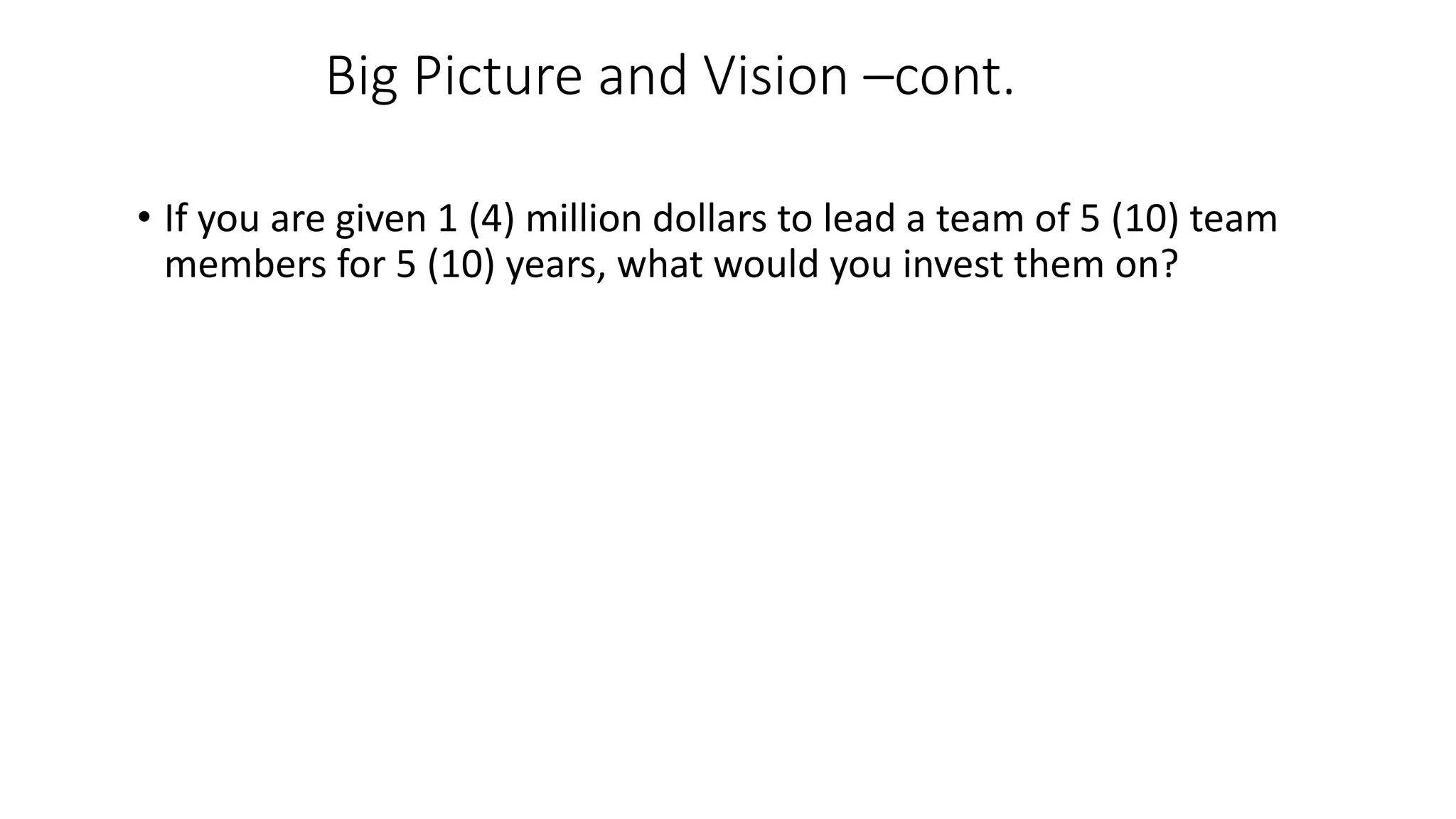

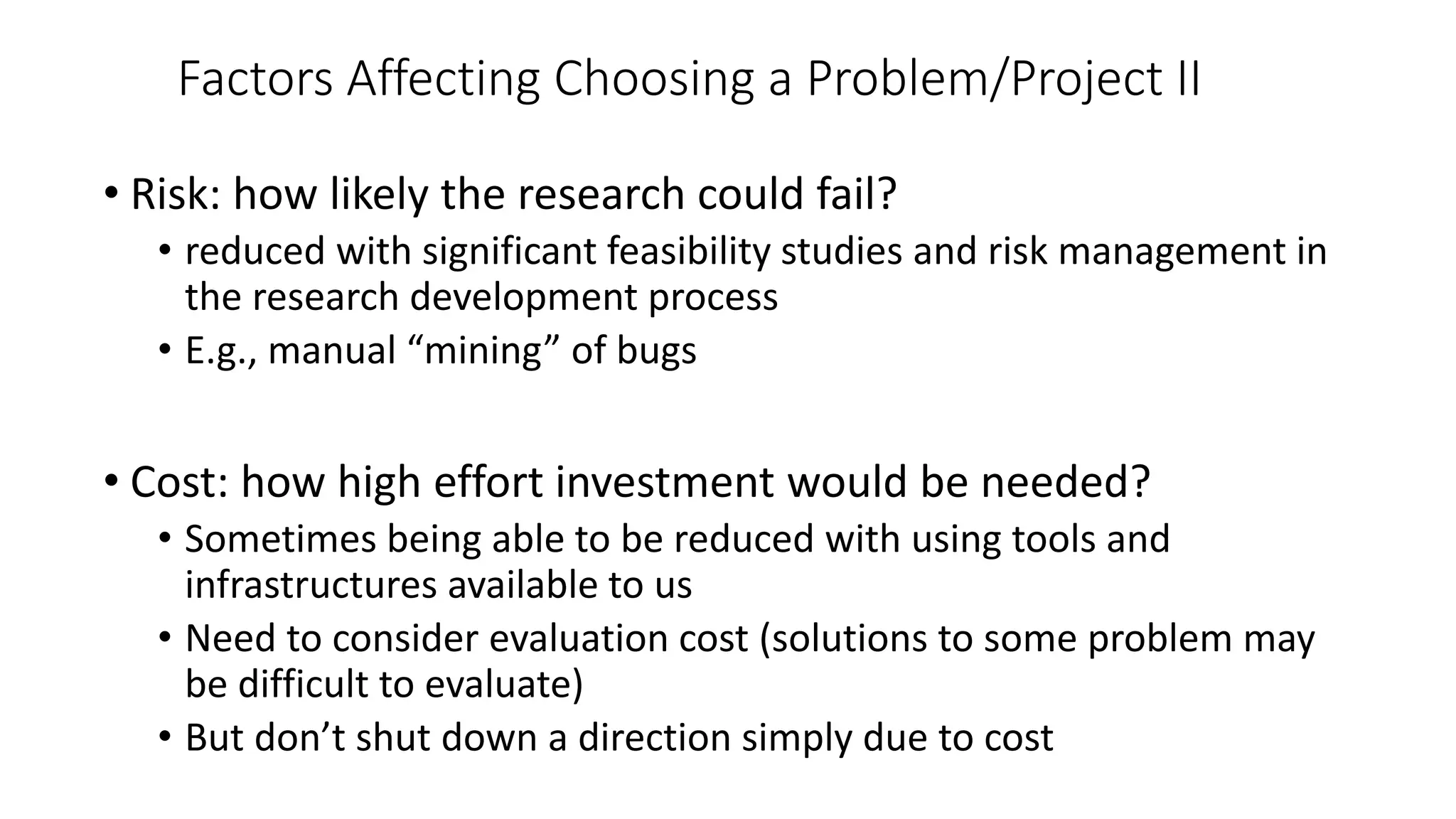

![Example Principles – Problem Space
• Question core assumptions or conventional wisdoms about SE
• Play around industrial tools to address their limitation
• Collaborate with industrial collaborators to decide on
problems of relevance to practice
• Investigate SE mining requirement and adapt or develop
mining algorithms to address them
(e.g., Suresh Thummalapenta [ICSE 09, ASE 09])
D. Notkin: Software, Software Engineering and Software Engineering Research: Some Unconventional Thoughts. J. Comput.
Sci. Technol. 24(2): 189-197 (2009) https://link.springer.com/article/10.1007/s11390-009-9217-4
D. Notkin’s ICSM 2006 keynote talk.](https://image.slidesharecdn.com/impactdrivenresearch2018-taoxie-180210225859/75/ISEC-18-Tutorial-Research-Methodology-on-Pursuing-Impact-Driven-Research-19-2048.jpg)
